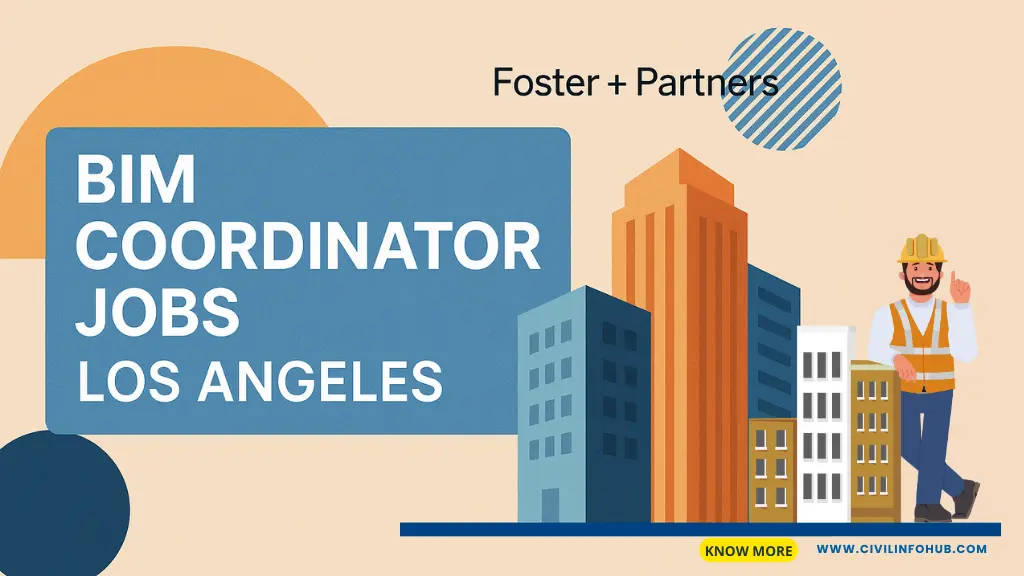Learn how to become a licensed civil engineer in the USA. Step-by-step guide on education, FE/PE exams, experience, and licensure requirements.
Introduction: The Path to a Civil Engineering License
Civil engineering is one of the most respected and rewarding professions in the United States. Whether it’s designing bridges, planning transportation systems, or managing construction projects, licensed civil engineers play a vital role in shaping the infrastructure we rely on every day. But here’s the catch—while anyone with a degree in civil engineering can call themselves an engineer, only licensed professionals can legally sign off on projects, approve plans, and call themselves Professional Engineers (PE).
So, how do you become a licensed civil engineer in the USA? This guide will walk you through the step-by-step process, requirements, and tips to help you earn your license and advance your career.
Step 1: Earn a Civil Engineering Degree from an Accredited Program
The first step is completing a Bachelor’s degree in Civil Engineering (or a related field) from an ABET-accredited program. Accreditation is crucial because most state licensing boards require it.
Why ABET Accreditation Matters
- Ensures the program meets national quality standards.
- Simplifies eligibility for licensure.
- Increases job opportunities with government agencies and top employers.
💡 Example: If you earned your degree from a non-ABET school, some states may require additional coursework or experience.
Step 2: Pass the FE Exam (Fundamentals of Engineering)
After graduation, the next milestone is passing the Fundamentals of Engineering (FE) Exam, also known as the Engineer-in-Training (EIT) exam.
Key Details About the FE Exam:
- Computer-based exam administered by NCEES (National Council of Examiners for Engineering and Surveying).
- Covers topics like mathematics, mechanics, materials, structural analysis, and more.
- Typically taken right after graduation (while concepts are fresh).
✅ Pro Tip: Many students take review courses to prepare for the FE exam, which significantly increases the pass rate.
Step 3: Gain Relevant Work Experience (Engineer-in-Training Period)
Once you pass the FE exam, you’ll officially be recognized as an Engineer-in-Training (EIT). The next step is gaining professional experience under a licensed PE.
Requirements:
- Usually 4 years of progressive engineering experience.
- Work must be supervised by a licensed Professional Engineer.
- Experience should include design, project management, and decision-making responsibilities.
📌 Case Example: If you work in a consulting firm, you may participate in structural design projects under a senior PE’s guidance. Each year of experience builds your portfolio for licensure. For resources and guidance, check out NSPE Licensure Resources.
Step 4: Pass the PE Exam (Principles and Practice of Engineering)
After meeting experience requirements, you’re eligible to take the PE Civil Exam.
About the PE Civil Exam:
- 8-hour, computer-based exam.
- Includes multiple-choice and alternative item format questions.
- Covers areas such as construction, geotechnical, structural, transportation, and water resources.
You can choose a depth area (specialization) depending on your career focus.✅ Pro Tip: Most engineers prepare for the PE exam with structured courses, practice tests, and study guides. Consistent study over several months is key to success. For state-specific requirements, visit the NCEES State Licensing Boards Directory.
Step 5: Apply for Licensure Through Your State Board
Licensure is regulated at the state level, meaning requirements can vary. Once you pass the PE exam:
- Submit your application to your state licensing board.
- Provide transcripts, FE/PE exam results, and work experience verification.
- Pay required fees.
After approval, you’ll receive your Professional Engineer (PE) license.
Step 6: Maintain and Renew Your PE License
Licensure isn’t a one-time achievement—you must maintain it through continuing education (CE) and renew periodically (every 1–3 years, depending on the state).
Continuing Education Topics:
- Ethics and professional practice.
- Technical advancements.
- Safety and regulatory updates.
Generative Ai in Construction 2025 – Smarter Project Planning & Innovative Design [Expert Guide]
Failing to renew can result in suspension or loss of your license.
Why Becoming a Licensed Civil Engineer Matters
Benefits of Licensure:
- Authority: Only PEs can sign off on designs and take legal responsibility.
- Career Growth: Higher-level roles often require a PE license.
- Earning Potential: Licensed engineers typically earn more than non-licensed peers.
- Credibility: A PE designation demonstrates professionalism and expertise.
Challenges to Consider:
- Time commitment (4+ years of experience required).
- Cost of exams and application fees.
- Rigorous study requirements.
AI Prompts for BOQ & Estimation – Save Hours in Quantity Calculations [Civil Engineers’ Guide]
FAQs About Becoming a Licensed Civil Engineer in the USA
1. How long does it take to become a licensed civil engineer in the USA?
It typically takes about 8 years (4 years of education + 4 years of experience) before you can obtain a PE license.
2. Can I work as a civil engineer without a PE license?
Yes, but you cannot legally sign off on projects, call yourself a Professional Engineer, or take full responsibility for engineering designs.
3. What is the cost of the FE and PE exams?
- FE Exam: Around $175.
- PE Exam: Around $375 (fees vary by state). More details at NCEES Exam Fees.
4. Do all civil engineers need a PE license?
Not necessarily. Many civil engineers work under licensed PEs without ever pursuing licensure. However, having a PE license provides more career opportunities.
5. Can international students become licensed civil engineers in the USA?
Yes, but their degrees may need to be evaluated for ABET equivalency, and they must still meet exam and experience requirements. Refer to NCEES Licensure Resources for International Applicants.
6. What happens if I fail the PE exam?
You can retake the PE exam. The number of attempts allowed depends on your state’s regulations.
7. Are there different types of PE licenses in civil engineering?
Yes. Civil engineers can specialize in areas like structural, geotechnical, transportation, or water resources.
Conclusion: Your Journey to Licensure : How to Become a Licensed Civil Engineer in the USA?
Becoming a licensed civil engineer in the USA is a rewarding journey that requires dedication, education, and perseverance. From earning your ABET-accredited degree to passing the FE and PE exams, each step brings you closer to unlocking new opportunities and responsibilities.
Whether you aspire to lead major infrastructure projects, start your own firm, or boost your earning potential, earning your PE license is one of the best investments you can make in your engineering career.
👉 Ready to take the next step? Start by preparing for the FE Exam, and map out your path to licensure today!
Disclaimer
This article is for educational purposes only and does not constitute legal or professional advice. Licensing requirements for civil engineers may vary by state. Please consult your state engineering board or official sources for the most accurate and up-to-date information.
Read More
AI Prompts for BOQ & Estimation – Save Hours in Quantity Calculations [Civil Engineers’ Guide]










